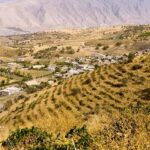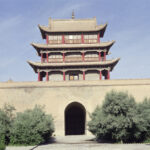History & Archaeology of Erbil Citadel: 6,000 Years of Inhabitation
The Erbil Citadel is a fortified settlement on top of an imposing ovoid-shaped tell (a hill created by many generations of people living and rebuilding on the same spot) in the Kurdistan region, Erbil Governorate. A continuous wall of tall 19th-century façades still conveys the visual impression of an impregnable fortress dominating the city of Erbil. The citadel features a peculiar fan-like pattern dating back to Erbil’s late Ottoman phase. Written and iconographic historical records document the antiquity of settlement on the site – Erbil corresponds to ancient Arbela, an important Assyrian political and religious centre – while archaeological finds and investigations suggest that the mound conceals the levels and remains of previous settlements.
Settled by the ancient Sumerians more than 6,000 years ago, historians think that the Erbil Citadel is one of the longest-continuously inhabited sites in the world. The Citadel, located on an archaeological tell rising around 98 ft (30 m) above the plain, is surrounded by a lower town that developed into the modern city of Erbil.
This time (September 2023), a security guard blocked my access to the Citadel because of construction work. Instead, I took a batch of photographs to create a panorama of the imposing outer wall of the citadel.
Not far from the Citadel is Erbil’s souk, which provides shelter from the sun and a respite from the 46C temperature of the open air. Also known as the Qaysari Market or Bazaar, it dates from the Ottoman period. As with most contemporary cities in the Middle East, you can find lunch, socks, underpants, cellphones, carpets, antiques and fresh produce throughout the market.
The last photograph on this page is of a Yezidi shrine.






Leave a comment